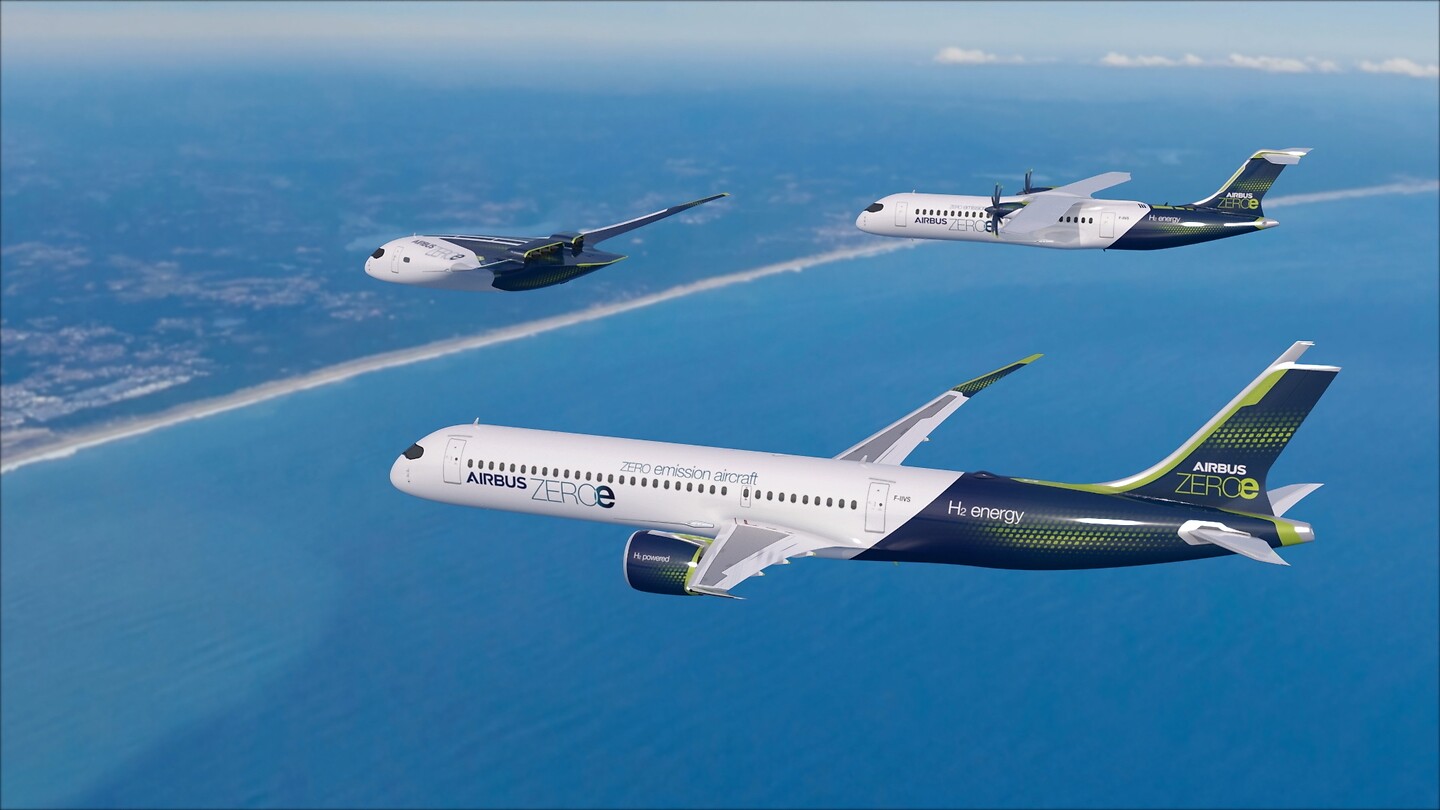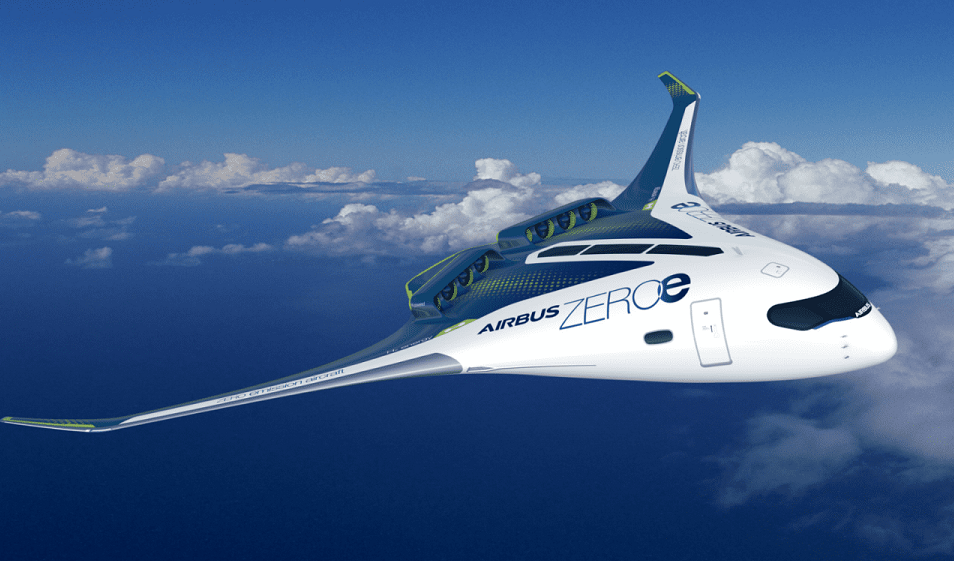RE: Is zero-carbon future in aerospace possible ?
Is zero-carbon future in aerospace possible ?
Achieving net zero flights by 2050 will be very difficult, but it is possible, argues Harry Mullins, chief innovation officer at the Aerospace Technology Institute (ATI).
His talk of a CO2-free future in aviation is buzzing. In July, the Farnborough Air Show was held in person for the first time in four years, coinciding with record temperatures in the UK. At the show, we heard a lot about reaching net zero in aviation, including the announcement of the Jet Zero strategy and his latest AGP strategy, as well as countless sustainability announcements from companies big and small.
We are also seeing the usual flurry of trading, indicating that order volumes are about to recover in a sector that has been notoriously difficult for several years. When the newspapers are filled with headlines about travel disruptions, rising fuel prices and climate change, it’s easy to be pessimistic about the future of aviation.
In a world without limits, more people will fly than they do now. Estimates vary, but in any “normal year” only 6% of the world’s population could fly. Many people do not fly. A huge amount of unlimited demand if you use the broad definition of unlimited.
Of course, some people don’t fly for health reasons, safety reasons, or simply because they don’t like the experience. But for many, traditional barriers to flying were affordable. For this reason, as global GDP has increased in recent decades and the cost of air travel has fallen dramatically, passenger numbers have gone from about 500 million in the early 1970s to about 4.5 billion in 2019. People have surged.
People want to fly safely, comfortably and affordably. Before the Covid travel bans, the main barrier to more people flying was cost. But in recent years there have been additional restrictions – not just the travel bans mentioned above, but also environmental concerns. In a world where it is possible, there is a risk that people and organizations will make decisions to reduce travel. Just 1% of the world’s population accounts for about half of aviation emissions, and this 1% is increasingly aware of its impact.
The mission of the aviation ecosystem must be to remove these limitations – to provide vehicles, infrastructure and services that make flying affordable, safe, green and comfortable. As the industry becomes able to offer cheaper and greener aircraft, headwinds such as environmental concerns and rising fuel prices are driving airlines to rebuild their fleets to be more sustainable and reduce costs. , will be a tailwind. This is also a huge opportunity for UK industry, a much more attractive job offer than the aerospace industry has offered so far.
But are we going fast enough?
The aerospace sector is at a critical time right now. The challenge is to reach net zero carbon emissions by 2050. Without action, the sector’s emissions are expected to rise from 2% to 25% of global emissions over this period. Assuming the industry returns to its pre-Covid growth trend, annual kerosene consumption will more than double by 2050 if no action is taken.
For some, the challenge was too great and fewer people flew. The technology is too immature, the investment needs too great, and the timeframe too short.
I tend to disagree with this assessment.
Underestimate the ability of investment and good technology to produce innovative solutions. They also have trouble seeing the current state of affairs and understanding how that state of affairs will change in 20 or 30 years. They conclude that this is not possible given the scale of growth required, forgetting that rapid scaling has been achieved before (cf. oil, rail, air travel).
But you have to be realistic about the scale of what I recently described as a “very bad” problem. This means that not only does it represent a major organizational challenge, but the more time runs out and the longer you wait to do it, the more difficult it becomes. Our Institute of Aerospace Engineering has carefully considered this issue. The latest edition of the UK Aerospace Strategy, published in April, incorporates input from dozens across the advisory network and outlines a combination of measures that will bring net zero flights by 2050. . The main “needle movers” are the development of highly efficient aircraft technology, the use of synthetic aviation fuels (both synthetic and biological) and, most importantly, the development of zero-carbon aircraft technology. I would like to talk about each area.
First, high-efficiency technology focused on improving energy efficiency. Examples include the development of next-generation ultra-high-bypass turbofan engines and lightweight, high-performance wing structures and integrated systems made from composite materials. Highest efficiency is desired regardless of fuel source. In addition to environmental benefits (including beyond CO2), there are also economic benefits that reduce flight costs. And I believe it will happen because super efficiency makes sense for any fuel type and has clear and understandable economic benefits.The logic is clear to the industry and the demand signal is understandable. It’s easy. Indeed, the aviation industry has invested heavily in developing highly efficient technology that makes air travel a more enjoyable, affordable and sustainable experience.
SAF basically refers to aviation fuels from non-fossil carbon sources, such as biofuels from biomass and synthetic fuels from CO2 capture, with the energy produced ideally coming from renewable sources. . SAFs offset carbon emissions from producing or recovering raw materials, making them fully or partially carbon neutral.
SAF is already deployed in commercial aircraft, but its use is limited to low blends with kerosene, with less than 0.1% global uptake, said to play a key role in decarbonizing the sector. Challenging, but not unattainable. When oil was taken seriously, it probably took 35 years for it to reach the same scale. work needs to be done to make it interoperable with His future SAF supply chain will require logistics and mixing facilities that can scale to hundreds of millions of tons.
One of the challenges with SAF is that manufacturers claim they can scale up production and cut costs significantly if they get good demand signals from airlines. The problem is that the airline needs to bring costs down to commit to his SAFs in bulk.
Sustainability is also questionable. For example, SAF does not actually result in zero carbon in the tailpipe. It relies on his CO2 capture and storage, a technology that is still in its infancy.
We also need to ensure that the production of SAF is sustainable in terms of raw materials. For example, the biomass available for sustainably producing SAF is limited.
Another problem, which also applies to hydrogen burned in gas turbines, is that it still produces nitrogen oxides, which poses a significant environmental burden.
Most of the work in this area is aimed at decarbonizing flight, but there are still many open questions about non-CO2 emissions and contrails, for example. But achieving net zero 2050 requires the adoption of SAF, so we need to find the answer.
What about zero carbon technology? This is where we really step into the transformation of the industry. In the urban air mobility space, companies like Vertical are driving incredible advances in electric aviation. The possibilities are very exciting, and you may find that the way we travel has changed dramatically in the last 10 or 20 years. It’s also great to see startups enter the industry in meaningful ways.
But from a sustainability point of view, I think urban air mobility will largely offset the impact of other subregional modes of transport, especially road transport. Electric aircraft cannot reach the larger end of commercial aviation. At least not in the foreseeable future.
What about hydrogen? You may have heard of FlyZero. His FlyZero, an ATI project, has brought together his 100 experts from across UK industry for just 12 months to study the technical and commercial feasibility of zero his carbon commercial flight . Participants included officials from 34 different industry partners and suppliers, 5 airports, 3 airlines, 16 universities and research institutes.
FlyZero has researched the basics of several energy sources, including batteries, liquid hydrogen fuel cells, liquid hydrogen combustion, gaseous hydrogen combustion, ammonia, and SAF. The project concluded that liquid hydrogen produced by renewable energy is the only jet fuel capable of delivering significant long-term growth in the regional, narrowbody and midsize segments. FlyZero has determined that liquid hydrogen-powered aircraft are not only technically feasible, but are expected to demonstrate excellent operational economics by the mid-2030s.
This discovery surprised me, but it’s true.
The cost of liquid hydrogen is expected to fall rapidly due to increased supply, technological advances, especially falling costs of renewable energy, and production efficiency. Hydrogen’s cost advantage will be accelerated by rising carbon prices for kerosene and SAF blended in kerosene.
However, there are major obstacles to the development and deployment of hydrogen-powered flight. As with SAF, environmental impacts other than CO2 are not well understood and much work needs to be done on climate science.
Similar to the SAF, there are challenges in fuel production. You will need a fairly large amount of green hydrogen. We also need to increase our liquefaction capacity by several orders of magnitude (in fact, there is currently no hydrogen liquefaction capacity in the UK, and very little for liquid hydrogen outside of Buxton’s Department of Health and Safety).
Airport infrastructure also needs to be improved. This is expensive and requires a lot of space (and/or a lot of tank trucks).
We also need to independently develop aerospace technologies such as liquid hydrogen gas turbines, hydrogen fuel systems, hydrogen tanks, fuel cells, thermal management and electrical systems, and aerodynamic structures. These are currently less mature technologies that require investment and a test infrastructure to support them.
You also need the correct signal. A lot of this has to do with the economy. The aerospace sector must commit to moving airlines to hydrogen-fueled fleets, and airlines must have their own demand signals. Ultimately, we must be confident that the introduction of zero-carbon aircraft will provide competitive, affordable and safe services. , convenient and environmentally friendly. Markets need to be accessible.
So, will we be able to provide affordable, comfortable, safe and environmentally friendly services to more than 6% of the world’s population by 2050? I think we have a challenge and I know this will make this industry a great and exciting place to work for decades to come. This is an edited version of a speech given by Harry Mullins at a dinner event hosted by Industrial Practice.





